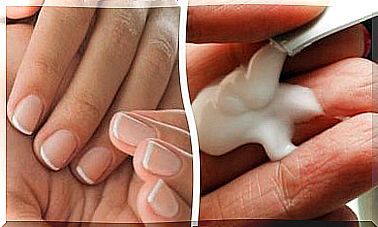Tips For Stimulating Baby’s Visual Ability

The sense of sight is one of the least developed at birth, which is why it is so important to stimulate your baby’s visual ability.
Children are born with difficulty concentrating. However, in a few months of intense learning they acquire this ability, imitating movements, recognizing faces and interacting with them.
The baby is attracted to high contrast objects, with rounded shapes, movements and voices. Early stimulation offers security, helping you to locate and recognize your caregivers. Visual communication comforts and connects the child.
Without a doubt, it is necessary to stimulate the baby for reasons that we will explain below. In the first year, the pace of cognitive experiences is dizzying.
What does a newborn look like?
Newborns enter the world with the proper vision for a life close to their mother. In the foreground they see the mother who, about 8 or 30 centimeters away, looks at them, smiles and breastfeeds. Further away, blurred vision prevents them from understanding what is happening around them, and they focus only on what is near and important for their survival.
The gaze of babies at birth is directed towards the mother, the rounded shape of her face, the contrast of her eyes and her high-pitched voice. Also for the darker color of the areola. It’s a first look that connects.
Pediatrician Marc Pilliot, in the article “The newborn’s gaze”, refers to this as a founding gaze. A bridge to the life that begins. Due to the dark heat of the uterus that is left behind, babies are not very fond of light. If they follow something with their eyes, they do it sideways, not up and down. They look to the edges and not to the center.

Tips to stimulate baby’s visual ability
In general, we should not force the child to do any activity. They learn exclusively by playing, in an environment of harmony, joy and tranquility. If we notice she’s angry, it’s because something isn’t right.
early stimulation
From the womb, the mother maintains an intimate and close relationship with the baby. The fetus hears sounds and voices that, at birth, it encounters again. This makes him excited. Numerous researches show that the prenatal relationship is crucial for the development of mother-infant affection.
As soon as the baby opens his eyes and there is an initial crossing of eyes that establishes the maternal relationship, it is possible to stimulate his visual capacity. Smells and colors, added to the warmth and softness of the skin, immediately set you up for the instinctive adventure of existence.
Strengthen contact
The mother-child visual relationship is intense and will be the guiding thread for the other stimuli. The relationships that the eye establishes with objects mobilize the hands and the body.
Eye-hand coordination is structural and will determine advances in neurological development. Even if the mother doesn’t look at him at the time of breastfeeding, the baby will lean forward trying to re-establish contact. If you don’t get that connection, he might cry.
Another element that strengthens the contact is the education and knowledge of the woman herself. In this sense, sensitive mothers are more likely to adapt their behaviors to their babies’ needs for stimulation, regulation and communication.
encourage curiosity
There is no doubt that the engine of knowledge is curiosity. In children, it moves and influences the entire learning system.
The area he visualizes, close and moving, restricts him to survival and protection. Biologically, he’s attracted to faces, because in particular it’s the faces he sees the most.
Afterwards, he is attracted by the luminous forms that reproduce sequences and organic rhythms. Attracting his curiosity, making him follow objects to make them appear and disappear: all of this is part of training his ability to seek and memorize. These are exercises that are part of the field of neuroplasticity.
Benefits of early visual stimulation
Visual acuity starts around three months and increases until six months. Afterwards, it already approaches the values of the visual field of adults, although from birth it is possible to stimulate the baby’s visual capacity.
An important element in the stimulus is the possible early detection of vision problems. In fact, they can be diagnosed before the first year of life.
For example, in babies less than thirty days old, it is possible to observe whether they fix and follow their gaze on an object of interest that is in motion. The exam will not be conclusive until the third month of life, but if the baby shows this sign, it should be taken to a specialist.
Finally, the stimulus generates body awareness, which is the basis of spatial awareness. It, in turn, is based on auditory and tactile development and haptic information at birth.

The colorful hanging toys stimulate children with their contrasts.
Stimulate baby’s visual ability: the sooner the better
By the 25th week of gestation, the fetus has 100 billion neurons, but only a few are connected at birth. It is from this moment until the age of 3 that they will be gradually integrated into the environment through networks and connections.
That is why early stimulation from the uterus, with music therapy, for example, to 6 years of age is so important. Adding exercises and games that encourage sensory, intellectual, motor, affective and social development is essential. Voices and sounds, caresses, colors and movements are also elements that generate nerve connections in children’s brains.
In conclusion, vision is one of the senses that should start to be stimulated as soon as possible. Keep in mind that it is in the first four months of life that vision develops, as well as the corresponding neurological circuitry.









